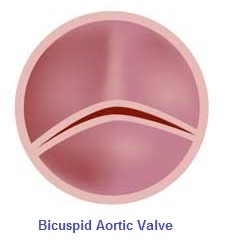Aortic Dissection
Aortic Dissection
Aortic dissection is the condition in which there is tearing of the inner layer of the aorta. The surging of blood through tear causes the middle and inner layer to dissect. Aortic dissection is sometimes fatal when blood filled channel ruptures through outside.
Symptoms
Symptoms typically include;
- Intense chest pain
- Acute and severe pain in abdomen
- Problematic breathing
- Paralyzed one side of body or sudden loss of speech and vision
- Weak pulse in thigh and arm of one side as compared to other
- Leg aches
- Leg paralysis.
Causes
This condition occur because of weakening of aortic wall. This can be due to hypertension or congenital condition like marfan syndrome, or due to traumatic injury. Depending upon the part of aorta affected there are 2 types of dissection;
- Type A: it’s the commonest and dangerous type that occurs when there is tear on the vessel when it leaves the heart in ascending aorta.
- Type B: in this tear occurs in the descending aorta.
Complications
Following complications can result;
- Fatal severe internal bleeding
- Kidney failure or life-threatening cardiac tamponade
- Stroke
- Severe intestinal bleeding and aortic regurgitation.
Diagnosis
Diagnosis involves detailed history and complete medical general physical examination to rule out the cause of dissection. Some common imaging tests include;
- Trans-esophageal ecocardiogram.
- CT scan
- Magnetic resonance angiogram.
Treatment
Treatment of aortic dissection depends upon it’s type
- Type A dissection treatment options are surgery, medication such as beta blockers and nitropruside or hypertensive drug.
- Type B dissection treatment options are medicatios and stenting surgery.
